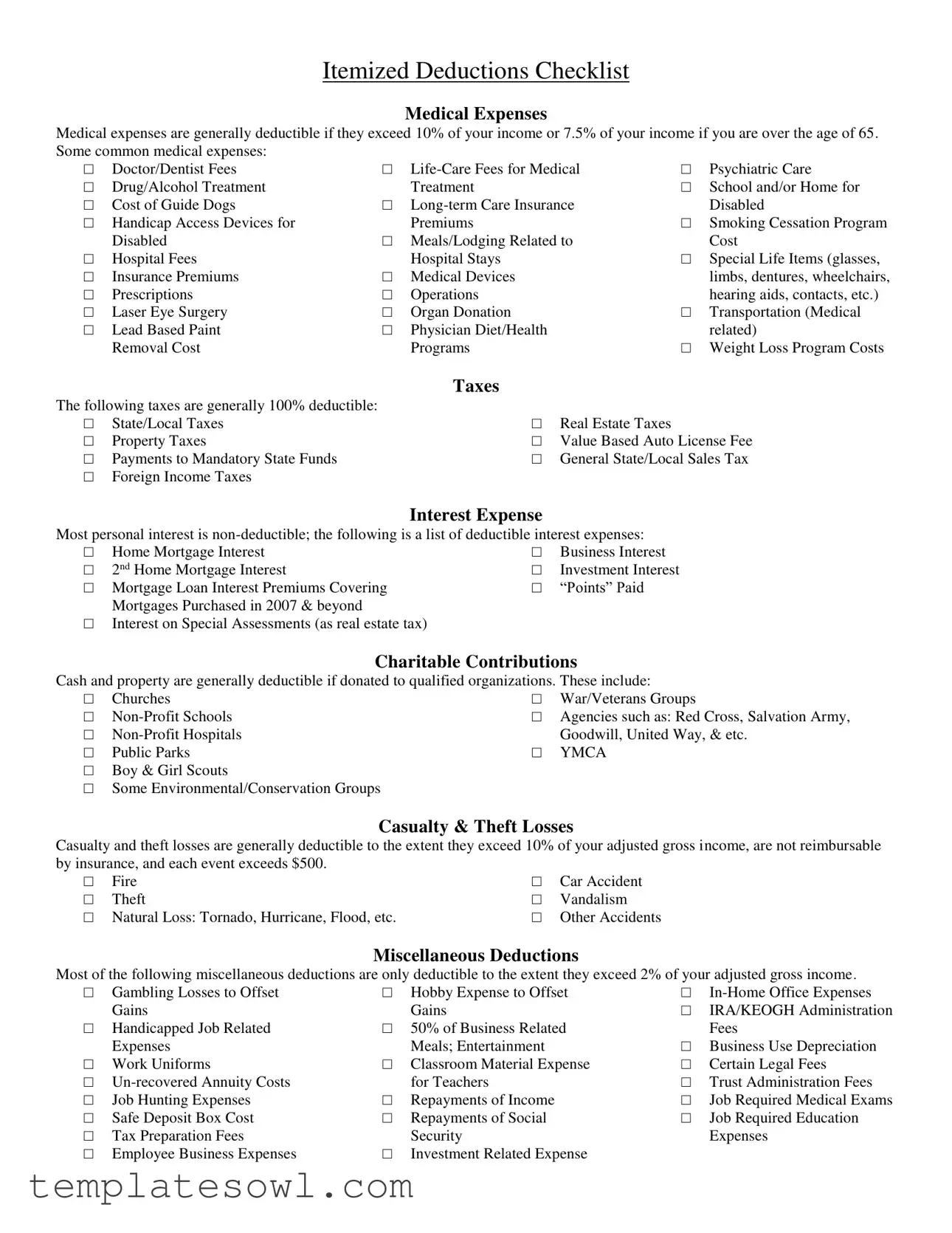What is an Itemized Deductions Checklist?
The Itemized Deductions Checklist is a tool designed to help you track and identify expenses that you may deduct from your taxable income. By itemizing your deductions, you can potentially lower your tax bill if your total deductions exceed the standard deduction available for taxpayers.
Who should use the Itemized Deductions Checklist?
This checklist is beneficial for taxpayers who have expenses such as medical costs, mortgage interest, property taxes, and charitable contributions that could exceed the standard deduction. If you own a home, have significant medical bills, or frequently donate to charity, you may find itemizing your deductions advantageous.
What types of medical expenses can I deduct?
You can generally deduct medical expenses that exceed 10% of your adjusted gross income (AGI) or 7.5% if you're over 65. Deductible expenses include life-care fees, doctor and dentist fees, hospital stays, and prescription medications, among others. It's important to keep detailed records of all your medical expenses to support your deductions.
How do I handle charitable contributions for deductions?
Cash and property donations to qualified organizations are deductible. Common eligible charities include churches, non-profits, and various humanitarian organizations. Ensure that you have receipts for your donations, as you may need to prove your contributions were made to qualified entities.
What can I do if I experience casualty or theft losses?
Casualty and theft losses can be deducted if they exceed 10% of your AGI and are not covered by insurance. Each theft or casualty event must be assessed individually, and any loss exceeding $500 is reportable as a deduction. Be sure to document your losses thoroughly and note the circumstances surrounding each incident.
What kind of taxes can I deduct?
You can deduct several types of taxes, including real estate taxes, state and local taxes, and property taxes. Certain fees, like value-based auto license fees and payments to mandatory state funds, are also deductible. Keeping track of these payments throughout the year will simplify the process when you file your taxes.
Are there any deductions related to interest expenses?
Yes, specific interest expenses are deductible. These include home mortgage interest, business interest, and investment interest. Generally, personal interest is not deductible. You’ll need to have documentation such as mortgage statements to prove the interest paid for your deductions.
What are some common miscellaneous deductions?
Miscellaneous deductions may be deductible to the extent they exceed 2% of your AGI. Examples include expenses for a home office, job-hunting costs, and certain legal fees. Tracking these relatively smaller expenses can add up, so keep all relevant receipts and documentation to ensure you maximize your deductions.
